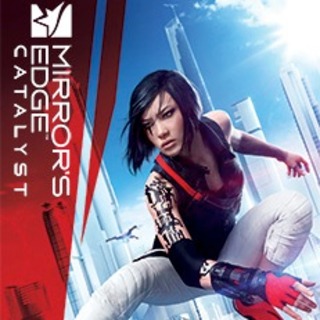Mirror’s Edge Catalyst should have been a simpler game. It should have focused on what it does even better than its excellent predecessor. It should have cut down on the find-and-gather side missions that seem obligatory in open worlds. It should have gone with an entirely different story that does a better job of complementing its fascinating sci-fi future.
But it did not. Catalyst is so wrapped up in being bigger and better than the original Mirror’s Edge that it ends up only being bigger. That’s not inherently a bad thing; the first Mirror’s Edge was far too short to fully enjoy its refreshing, flowing parkour system. But Catalyst, at times, worries more about if you have something to do than whether or not what you’re doing works in its own context.
But I digress: Mirror’s Edge Catalyst takes place in the City of Glass, the capital of a futuristic nation overrun by a dystopian version of extreme capitalism. There is no government, only ruling corporations and the families that lead them. You play as Faith, a “runner” that acts as part of an illicit organized courier system across the rooftops of Glass. Catalyst thankfully wastes no time throwing you right into her bright-red running shoes and whisking you off to leap and climb across the tops of soaring skyscrapers.
In these simple moments of running from place to place, Catalyst is a magical experience. The Mirror’s Edge series remains the only legitimate example of good first-person platforming, and as you fall into the rhythm of jumps, slides, and wall-runs, Catalyst feels like playing water. It’s smooth, it’s crisp and easy and clear, and it is immensely satisfying. In a generation where design trends have moved further and further towards complicated three-dimensional movement, Catalyst carries on the original Mirror’s Edge’s mastery.
The core mechanics are strong enough to make Catalyst worth playing from beginning to end and then some, but Catalyst sets such a strong base that it becomes unable to proceed from its foundation. A few essential mechanics are locked within Catalyst’s simplistic and unexciting skill trees, but they become available within an hour or so. A rope that allows you to swing and grapple becomes available near the halfway point, but it can only be used at certain pre-designated points that are painfully rare throughout the world.
But just as Catalyst succeeds where the original succeeds, it also fails where the original fails. Thankfully there are no more awkward shooting mechanics, but instead they’ve been replaced by a clunky martial arts system that feels at odds with the game’s emphasis on movement. Fights often fall into a pattern of kick, different kick, dodge, repeat until everyone is down, and ideas like knocking enemies into each other or off of ledges seem both silly and against Faith’s character (“I’m not an assassin!” she says at one point, but then proceeds to push dozens of policemen over railings to their doom). Catalyst tries to encourage you to use movement and the environment to your advantage, but this too quickly becomes cyclical. Enemies stupidly chase after you in your direct trail, which allows for a pattern of running in circles and leaping off of the same obstacles to score a downward kick before starting again to run away.
In fact every time Catalyst throws you into its parkour flow, it puts up a dam to block your way. Maybe it throws an enemy directly in your path that you have to fight or awkwardly push away to continue. Maybe it tempts you with one of the many collectibles that require you to come to a full stop to gather.
Not all diversions are so antithetical to Catalyst’s premise. Deliveries offer thrilling timed runs for modest EXP gain. GridNodes (which must be completed to unlock fast travel) offer interesting climbing challenges that require a large amount of vertical thinking. The rare side missions that the game offers usually succeed at introducing and testing some of Catalyst’s more obscure mechanics (like enemy alert levels and how to reduce them).
Missions themselves are usually a solid length and end before becoming tiring. They bring you on a tour of Catalyst’s gorgeous city, from underground tunnels to soaring sky-needles. Although low quality textures can often make for a blocky horizon and rough detail, Catalyst’s minimalistic, vibrant color pallet and clean, modern architecture make it a visual joy. It’s a shame that the journey through such locales has next to nothing but a techno-babble story to tie it together. The campaign is barely coherent until almost three-quarters of the way through, and the game expects you to already know information and motivations that it won’t actually tell you until later on. The whole ordeal, the plot, the characters, the action, all feels written and acted by a group of rebellious teenagers. Only one personality, a hacker named “Plastic” ever succeeds at being entertaining. The rest of the cast, Faith included, either trudges along with no clear motivations or is dropped from the story entirely after just a few short hours.
All of this is baggage on what is at its core an improvement over its predecessor. Despite its apparent misunderstanding of itself, Mirror’s Edge Catalyst’s core gameplay mechanics still pull through to make it a wildly fun, if deeply flawed, experience.

